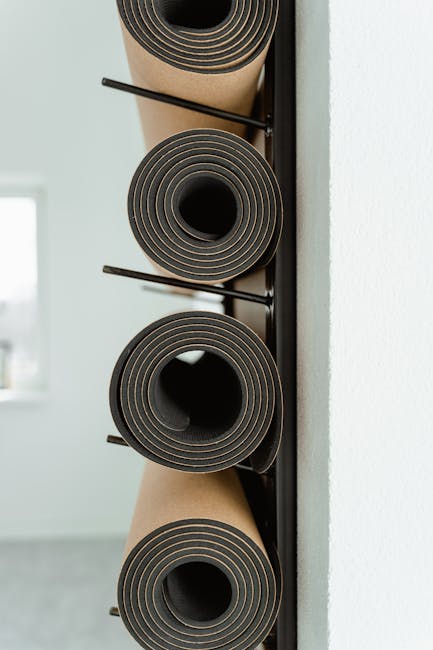Yoga Basics: A Beginner’s Path to Wellness
Embarking on a journey to wellness can be as simple as rolling out a yoga mat. Whether you’re looking to improve your flexibility, reduce stress, or just try something new, yoga offers a welcoming path. In this guide, we’ll explore the fundamentals of yoga for beginners. Let’s dive in! 🧘♀️
Table of Contents
1. Introduction to Yoga
2. Benefits of Yoga for Beginners
3. Getting Started: What You Need
4. Basic Yoga Poses for Beginners
5. Tips for Maintaining Your Practice
6. Conclusion
7. FAQ
Introduction to Yoga
Yoga is more than just a series of poses and stretches; it’s a mind-body practice that combines physical postures, breathing exercises, and meditation. Originating in ancient India, yoga has become a popular form of exercise and relaxation worldwide. Its holistic approach helps you connect with your inner self, promoting overall well-being. 🌟
Benefits of Yoga for Beginners
Starting yoga can bring a host of benefits, both mentally and physically:
✨ Improved Flexibility: Regular practice helps lengthen muscles and increase your range of motion.
✨ Stress Reduction: The breathing techniques and meditative aspects of yoga can reduce stress and anxiety levels.
✨ Enhanced Strength: Yoga requires various muscle groups to work together, building strength over time.
✨ Better Posture: As you gain awareness of your body, you’ll naturally improve your posture.
✨ Boosted Mental Clarity: Yoga encourages mindfulness, enhancing focus and mental clarity.
Getting Started: What You Need
Starting your yoga journey is simple and doesn’t require much:
🧘♂️ A Yoga Mat: A good quality mat provides cushioning and grip.
👕 Comfortable Clothing: Wear clothes that allow you to move freely.
💧 Water Bottle: Stay hydrated before and after your practice.
📚 Instruction: Consider using online videos or attending a beginner’s class to guide you through the poses.
Basic Yoga Poses for Beginners
Here are a few beginner-friendly poses to get you started:
🧘♀️ Mountain Pose (Tadasana): This foundational pose improves posture and balance.
🧘♀️ Downward-Facing Dog (Adho Mukha Svanasana): A great stretch for the entire body, promoting strength and flexibility.
🧘♀️ Warrior I (Virabhadrasana I): Builds strength in the legs and core while improving focus.
🧘♀️ Child’s Pose (Balasana): A restful pose that calms the mind and relieves tension.
Tips for Maintaining Your Practice
Staying consistent with yoga can be challenging, but here are some tips to help:
💪 Set a Schedule: Aim to practice at the same time each day to build a habit.
🧘♂️ Start Small: Begin with short sessions and gradually increase as you become more comfortable.
🎶 Create a Relaxing Environment: Use calming music and a quiet space to enhance your practice.
👫 Find a Yoga Buddy: Practicing with a friend can keep you motivated and accountable.
Conclusion
Yoga is a wonderful journey of self-discovery and wellness, perfect for beginners and veterans alike. By integrating yoga into your life, you can experience profound physical and mental benefits. Remember, it’s not about perfection but progress. Roll out your mat and embrace the path to a healthier you! 🌿
FAQ
Q: How often should beginners practice yoga?
A: Ideally, beginners should aim for 2-3 times a week, gradually increasing frequency as they become more comfortable.
Q: Can I do yoga at home without any experience?
A: Absolutely! With online resources and beginner-friendly videos, you can start practicing yoga at home. Just ensure you follow proper guidance to avoid injuries.
Q: Do I need to be flexible to start yoga?
A: No, yoga is designed to improve flexibility over time. Start where you are, and you’ll notice progress with consistent practice.
Q: What type of yoga is best for beginners?
A: Hatha yoga or Vinyasa yoga are great choices for beginners, focusing on basic postures and alignment.
Embrace your yoga journey with an open heart and mind, and enjoy the many benefits it brings to your life! Namaste. 🙏





